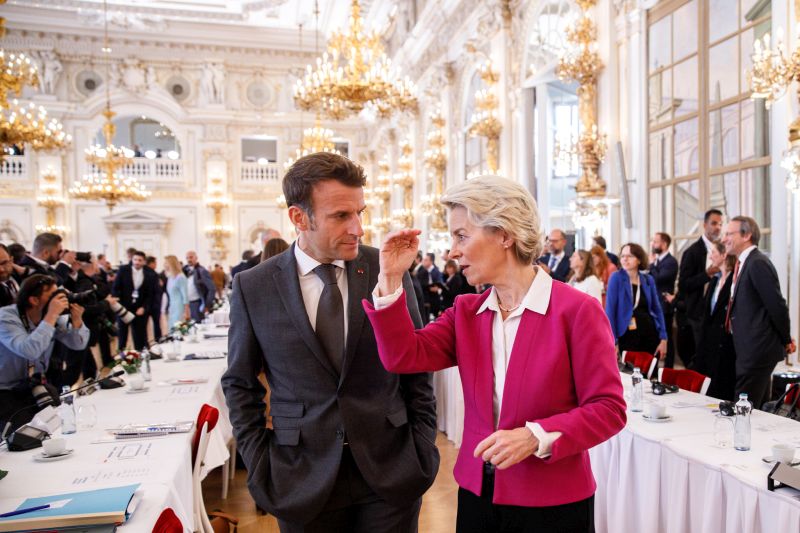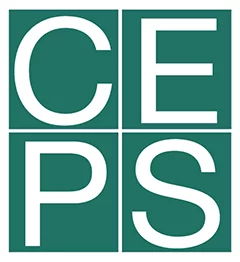The European Political Community (EPC) – the new platform that unites all 27 EU Member States and 17 non-EU European countries – met for the first time on 6 October in Prague. The initiative is a response to the desire to create a united front against Russian aggression.
But the invasion was not the only reason for the EPC’s creation. The EU’s strategic thinking about its neighbourhood and the continent has shifted – for securing energy, for fighting against climate change and repelling cyber-attacks, the EU has no choice but to look beyond its borders.
After years of deadlock over enlargement, Brexit and various failures in the neighbourhood policy, it was about time that the EU went the extra mile to improve coordination between the EU and non-EU European countries and work to create a true continental space.
At their heart, French President Emmanuel Macron’s ‘European Political Community’ and European Council President Charles Michel’s ‘European Geopolitical Community’, desire the same thing: to improve foreign and security cooperation on the continent.
A surprisingly successful first meeting
In Prague, a concrete first step has been taken in this direction. This inaugral meeting started a reapproachment between France and the UK, a pretty decent achievement in itself. It also achieved the promise of a trilateral meeting between Spain, Portugal and France over the MidCat pipeline and an agreement to send an EU civilian mission to Armenia and Azerbaijan.
There were hours of bilateral and minilateral meetings that contributed to a better understanding of priorities and led various leaders that are not usually around the same table to socialise with each other.
Indeed, this was a family picture worth celebrating, offering the possibility of – in the long term – a real sense of belonging and unity to all Europeans, not just to those possessing a burgundy EU passport.
However, the focus for the months to come should be on three things: whether the EPC could improve relations between the EU and non-EU countries with an eye on future policy convergence, whether the initiative can contribute to twenty-first century multilateralism, and if the EPC could help facilitate candidate countries’ integration into the EU.
Here, a flexible ‘EU-centricness’ would be a good path to follow but for this to work, the EU also needs to have a geniune desire to understand the concerns of the non-EU countries of the continent.
Not a new Council of Europe
The EU decided to invite the (potential) candidate countries, the EFTA countries, the UK, and Azerbeijan and Armenia to Prague. The latter two surprised many but they were the only two remaining from the Eastern Partnership that hadn’t already formally applied to join the EU (like Georgia, Moldova and Ukraine) or hadn’t been explicitly excluded (Belarus).
The invitation list very much fit into the EU’s operating logic and programme structure. It is also broadly aligned with the Council of Europe’s current membership list but sans Andorra, Monaco and San Marino, while adding Kosovo with an asterix. The invitation list has led many to question why an entirely new institution is needed. In short, the key reason is the luxury of all being able to rely on the EU’s vast resources.
The invited non-EU countries are already deeply integrated with the EU – they have association agreements, deep and comprehensive free trade agreements (DCFTAs), some are in the European Economic Area (EEA), and one even in the Customs Union. Initiating a platform with a certain degree of EU-centricness is thus not necessarily a bad idea when you think about operationality, resources and long-term capacity.
For now, the EPC is intergovernmental, just as the Brits desired. But it is also within an arm’s length of being able to tap into the EU’s resources in a bid to address some of Europe’s many problems. For example, when it was decided that a mission would be sent to Armenia and Azerbaijan, it was also decided that the EU institutions will organise it. This is surely the key added value of inventing a new organisation with close ties to the EU.
What future success depends on
Right now, the EPC is like a white canvas to be painted on. It could become a rather loose coordination platform – or a talking shop as many claim it will morph into – where leaders simply gather to exchange notes with each other (which is not necessarily a bad thing in itself), or it could become an entirely new set-up that may lead to a certain degree of policy harmonisation in specific fields.
The EU-centricness of the initiative – the links with the Council Presidencies, but also with the European Commission and the EEAS when it comes to implementation – will guarantee that harmonisation is aligned with the EU’s priorities. The flexibility to participate in future initiatives will be key, both for opening the way for ‘coalitions of the willing’ to advance common agendas, and to avoid frustration for those countries that would prefer not to participate in a particular mission or action.
The EU’s future calculations on enlargement policy, neighbourhood policy and its regional initiatives like the Eastern Partnership will also play a role in defining how much political capital and resources will be invested into the EPC.
On the flipside, the non-EU countries’ willingness to collaborate will also be crucial. Democratic credentials, thus far, have not been a key consideration. Having said that, the EPC should not undermine the EU’s own goals and policies.
The EPC is currently built on two pillars – being a flexible platform for dialogue with non-EU European countries, while also having the luxury to utilise the EU’s considerable resources when necessary.
This will make the EPC more effective than the Council of Europe and the OSCE in the long run. For a long time, global and European events have called for the EU to become a more active geopolitical actor. Following the initial successes of the Prague meeting, the EPC may actually be a positive step towards that goal and to become a solid building block for twenty-first century multilaterilism.
About the author:
Ilke Toygür


